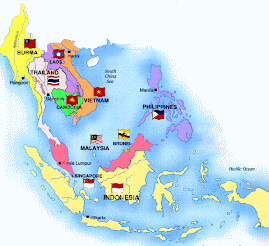Martyna Glodowska, Malgorzata Lyszcz
Institute of Soil Science and Plant Cultivation – State Research Institute, Pulawy, Poland
Abstract
Recently biochar gained importance as a way to deal with global climate change, by
sequestering C into soils, but also as a soil amendment and bioremediation tool. Many studies have
demonstrated the positive influence of biochar on soil quality and subsequently, plant growth,
although the results are not consistent and climate seems to be the main reason for this inconsistency.
Number of studies has been conducted to find out how biochar affect soil characteristic, fertilizers
efficiency as well as soil microbiota. The main focus of this review is to discuss biochar features and
it application in agricultural practices that could improve soil productivity and in consequence plant
growth and development.
1. Introduction
Biochar, although not in the form we know today, has been used since centuries. The
incorporation of charcoal into the soil to enhance soil quality has been an agricultural practice for
thousands of years (Xu et al. 2012). Pre-Columbian people were combining charred residues of
organic and inorganic wastes with the soils that are known today as Terra Preta - rich in organic matter
and nutrients Amazonian soil. The oldest description of charcoal use in agriculture may be from the
17th century Encyclopedia of Agriculture by Yasusada Miyazaki, where he cited an even older
textbook from China. We know from there that rice husk charcoal has been used as a soil amendment
probably since the beginning of rice cultivation in Asia (Ogava and Okimori, 2010). Nowadays, the
term “biochar” refers to a product of biomass pyrolysis, wherein plant-based materials are heated
under anaerobic conditions to capture combustible gases. Originally, biochar production was
associated with slow pyrolysis, characterized by a long time (more than 10 h) under relatively low
temperature, typically around 400°C. More recently, there has been growing interest in biochar
production through fast pyrolysis, where the organic materials are rapidly heated to 450-600°C (Xu
et al. 2012). The reason why biochar gained public interest is mainly associated with its carbon
sequestration ability. Biochar is a promising tool to reduce the atmospheric CO2 concentration
because it slows the return of photosynthetically fixed carbon to the atmosphere (Xu et al., 2012). The
half-life of biochar in the soil is estimated to range from hundreds to thousands of years (Zimmerman
2010). Therefore, supplying the soil with biochar is a strategy for long-term carbon sequestration.
Moreover, there is increasing interest in biochar as a soil amendment. Number of studies has
demonstrated that biochar application can significantly improve crop productivity (Chan et al. 2007),
improve soil conditions (Xu et al., 2012), and increase the efficiency of fertilizers (Asai et al., 2009),
it can also be used in remediation processes (Chan et al., 2012). The main goal of this paper is to
review the effect of biochar on soil properties and discuss it use in the agricultural practices.
6. Conclusion
Biochar became
[could become?] an important tool to mitigate the climate changes caused by anthropogenic
activities. But as it is presented above biochar can also be successfully used in agricultural sector. The
literature review presented above suggests that biochar is a material that significantly affects soil
quality by changing its structure as well as chemical composition. It can be used in the water stress
management and in the bioremediation processes, particularly in recovery of the soils contaminated
with PAHs and heave metals. There are a growing number of evidences showing positive effect of
biochar on plant growth and development; however this effect is strongly related to the climate and
soil type. Also, biochar when applied together with mineral or organic fertilizers seems to
significantly improve fertilizer efficiency and use by the plant. Finally, biochar was found to cause important changes in soil microbiota structure and function and it is believe to create favorable
conditions for microorganisms.

 Mattias Gustaffson
Mattias Gustaffson
